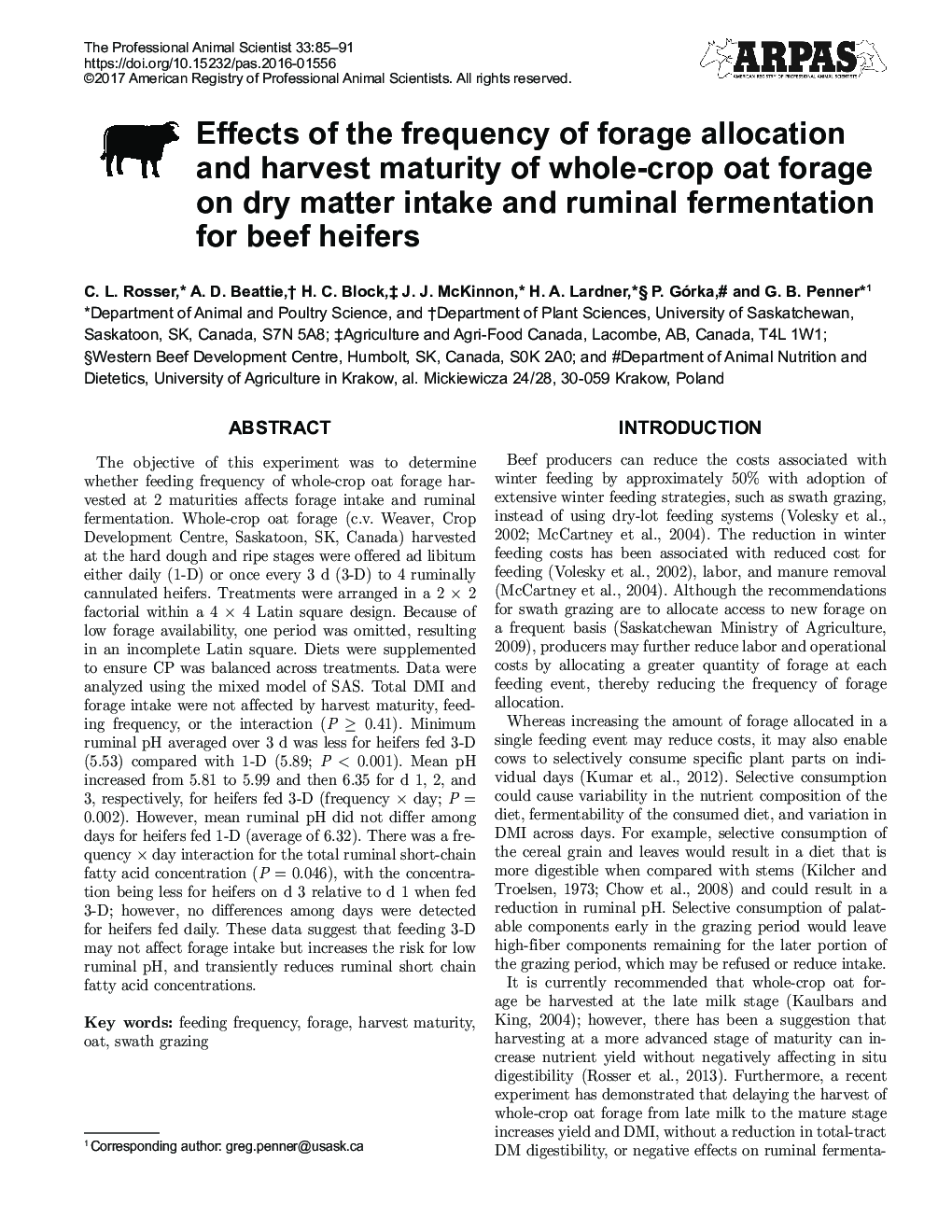| کد مقاله | کد نشریه | سال انتشار | مقاله انگلیسی | نسخه تمام متن |
|---|---|---|---|---|
| 8503786 | 1554284 | 2017 | 7 صفحه PDF | دانلود رایگان |
عنوان انگلیسی مقاله ISI
Effects of the frequency of forage allocation and harvest maturity of whole-crop oat forage on dry matter intake and ruminal fermentation for beef heifers
ترجمه فارسی عنوان
تاثیر فراوانی تخصیص علوفه و بلوغ برداشت محصول علوفه کل محصولات زراعی بر مصرف ماده خشک و تخمیر شیردهی برای تلیسه های گوشت گاو
دانلود مقاله + سفارش ترجمه
دانلود مقاله ISI انگلیسی
رایگان برای ایرانیان
کلمات کلیدی
فرکانس تغذیه، علوفه، بلوغ برداشت، جو دو سر، چرت زدن،
موضوعات مرتبط
علوم زیستی و بیوفناوری
علوم کشاورزی و بیولوژیک
علوم دامی و جانورشناسی
چکیده انگلیسی
The objective of this experiment was to determine whether feeding frequency of whole-crop oat forage harvested at 2 maturities affects forage intake and ruminal fermentation. Whole-crop oat forage (c.v. Weaver, Crop Development Centre, Saskatoon, SK, Canada) harvested at the hard dough and ripe stages were offered ad libitum either daily (1-D) or once every 3 d (3-D) to 4 ruminally cannulated heifers. Treatments were arranged in a 2 à 2 factorial within a 4 à 4 Latin square design. Because of low forage availability, one period was omitted, resulting in an incomplete Latin square. Diets were supplemented to ensure CP was balanced across treatments. Data were analyzed using the mixed model of SAS. Total DMI and forage intake were not affected by harvest maturity, feeding frequency, or the interaction (P ⥠0.41). Minimum ruminal pH averaged over 3 d was less for heifers fed 3-D (5.53) compared with 1-D (5.89; P < 0.001). Mean pH increased from 5.81 to 5.99 and then 6.35 for d 1, 2, and 3, respectively, for heifers fed 3-D (frequency à day; P = 0.002). However, mean ruminal pH did not differ among days for heifers fed 1-D (average of 6.32). There was a frequency à day interaction for the total ruminal short-chain fatty acid concentration (P = 0.046), with the concentration being less for heifers on d 3 relative to d 1 when fed 3-D; however, no differences among days were detected for heifers fed daily. These data suggest that feeding 3-D may not affect forage intake but increases the risk for low ruminal pH, and transiently reduces ruminal short chain fatty acid concentrations.
ناشر
Database: Elsevier - ScienceDirect (ساینس دایرکت)
Journal: The Professional Animal Scientist - Volume 33, Issue 1, February 2017, Pages 85-91
Journal: The Professional Animal Scientist - Volume 33, Issue 1, February 2017, Pages 85-91
نویسندگان
C.L. Rosser, A.D. Beattie, H.C. Block, J.J. McKinnon, H.A. Lardner, P. Górka, G.B. Penner,
